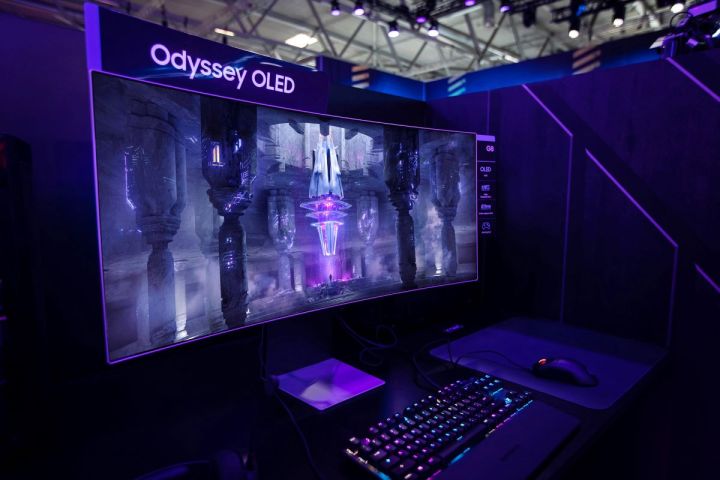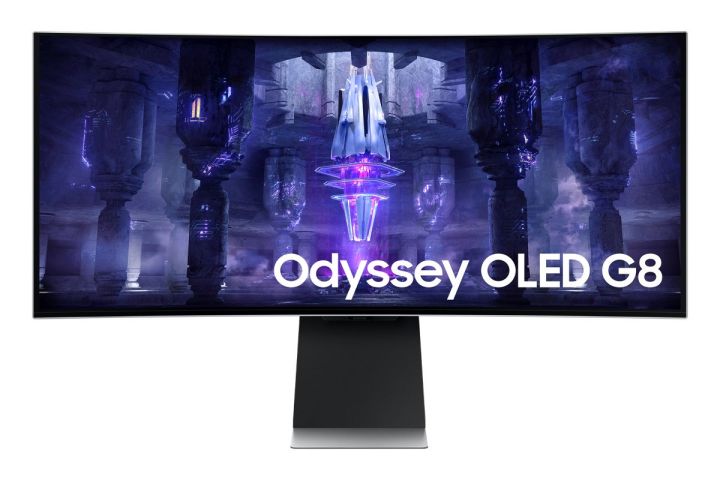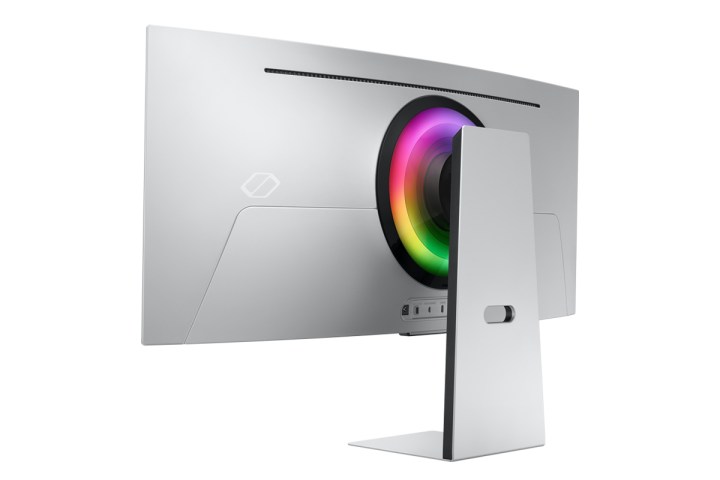Samsung’s first QD-OLED gaming monitor is available now. First announced in August 2022, the Odyssey OLED G8 is a 34-inch ultrawide gaming display sporting QD-OLED technology, but it has a problem — we’ve already had this same monitor for nearly a year.
Here’s a quick rundown on the specs. The Odyssey OLED G8 is a 34-inch QD-OLED monitor with a 3,440 x 1,440 resolution, a 21:9 aspect ratio, and a 175Hz refresh rate. It also comes with some nifty features like up to 65 watts of USB power delivery, and it’s earned VESA’s DisplayHDR True Black 400 certification.

That might sound familiar if you’re up-to-date on the best gaming monitors. The Alienware 34 QD-OLED sports the same specs, and it launched nearly a year ago. The problem for Samsung is Alienware’s monitor is as cheap as $1,000, while Samsung is asking $1,500 for the Odyssey OLED G8.
Samsung isn’t just charging extra for the sake of it, though. The Odyssey OLED G8 comes with some extra goodies, namely the inclusion of Samsung’s Smart TV platform that includes Samsung GameHub, along with USB-C power delivery.
The Odyssey OLED G8 also includes Samsung’s Neo Quantum processor. This is the same processor that helps Samsung dominate the list of the best QLED TVs, providing additional contrast, color, and sharpening processing that isn’t present on Alienware’s version.
What isn’t clear is if Samsung’s monitor is using a different panel. The Alienware 34 QD-OLED uses a Samsung Display screen. We reached out to Samsung to see if the Odyssey OLED G8 uses an updated version, and we’ll update this article when we hear back.
The Neo Quantum processor is sure to give the Odyssey OLED G8 a boost, though, as it does on Samsung’s TVs. Despite the high price tag, the Odyssey OLED G8 looks like an impressive gaming display. Samsung is boasting 0.03ms of response time thanks to the QD-OLED panel, as well as FreeSync Premium Pro certification.
In its announcement, Samsung also highlighted the upcoming Odyssey OLED G9. This 49-inch, 32:9 screen also uses a QD-OLED panel and comes with a speedy 240Hz refresh rate. Samsung says to expect it “later this year.”
Editors' Recommendations
- The world’s first 8K mini-LED monitor has arrived
- Gigabyte just upped its OLED monitor game
- A new wave of cheap mini-LED gaming monitors has arrived
- Why OLED beats mini-LED for gaming every time
- There’s a war brewing over OLED gaming monitors






